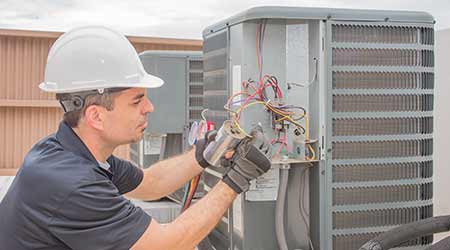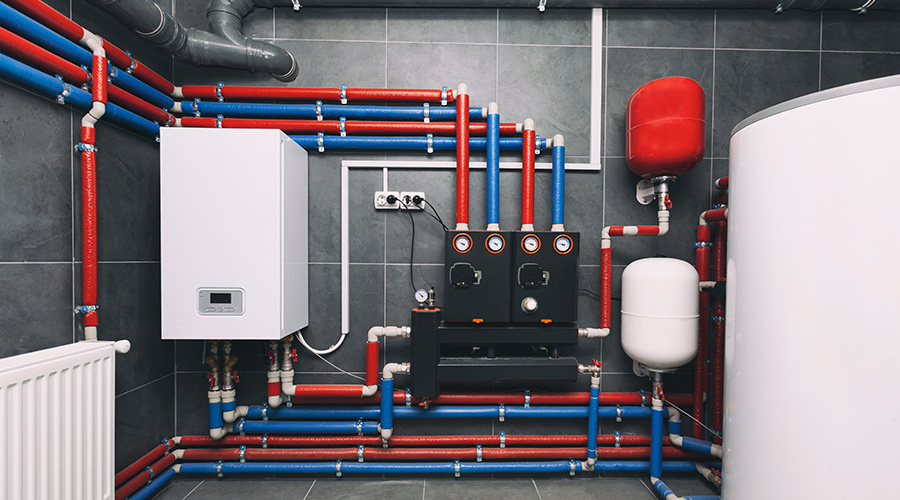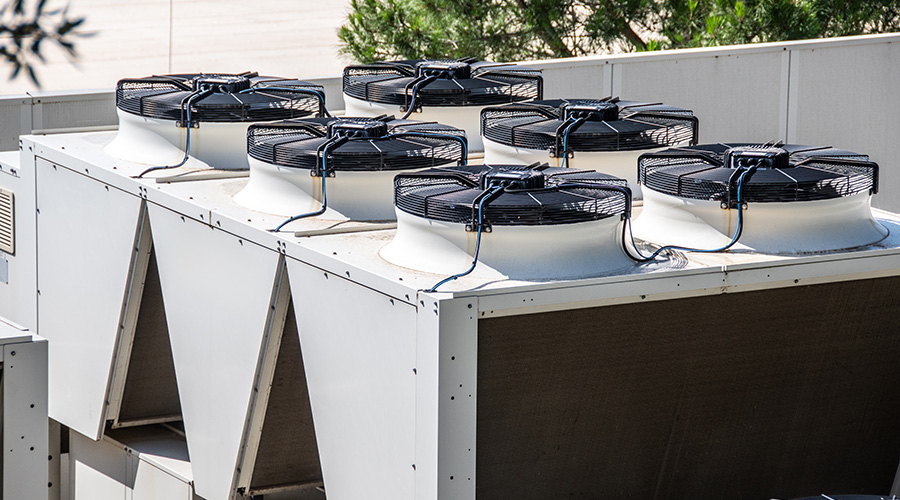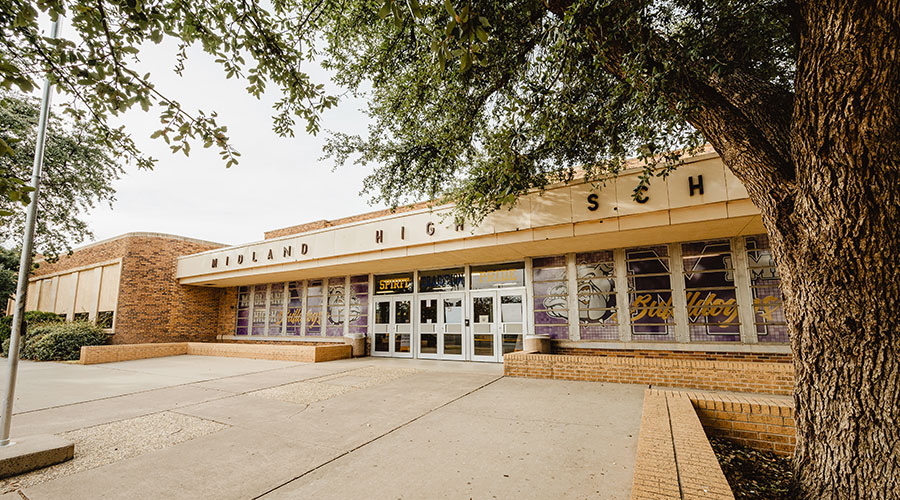 Managers who closely monitor and analyze the operation of HVAC systems can achieve savings.
Managers who closely monitor and analyze the operation of HVAC systems can achieve savings.Energy Waste: 6 Common Culprits
Addressing traditional trouble spots can help departments increase system efficiency and curtail utility costs.
Saving energy in HVAC systems does not always mean maintenance and engineering managers have to spend a great deal of money or disrupt operations by replacing existing systems. Sometimes, the largest savings and quickest paybacks come from paying attention to the operation of systems and equipment already in place in institutional and commercial facilities.
Managers who closely monitor and analyze the operation of HVAC systems often find they can achieve savings of 5-20 percent simply by ensuring that technicians properly maintain and operate HVAC systems in the most efficient manner possible while still meeting the needs of the operations being conducted in the facility.
Even managers who have updated to more efficient equipment find that attention to detail provides similar ongoing savings. Systems degrade with time. Sensors drift. Damper seals leak. Dirt accumulates on heat-transfer surfaces. Technicians bypass system controls in an attempt to fix operational issues. These tactics contribute to losses in efficiency.
Energy efficiency issues can go all the way back to system installation. Poor designs, oversized equipment, field changes to designs, and improper installation and calibration all might have led to HVAC systems operating inefficiently.
Managers can overcome many of these issues, but it is not a simple one-and-done effort. It requires commitment and an ongoing effort. The reward will be not only reduced energy use but also improved performance and reliability. While technology can help identify issues, managers need to start by using shoe leather and keeping eyes and ears open.
Common culprits
Energy waste can occur practically anywhere in HVAC systems. While facilities can benefit from having technicians look at all systems from top to bottom, managers can achieve the greatest energy savings by focusing technicians’ efforts on six common culprits that traditionally lead to the most energy waste in facilities.
Operating schedules. The varied spaces in facilities rarely require the same level of temperature control and ventilation rates around the clock. To save energy, managers should match equipment operation to space requirements. While this practice might have been the case at some point in a facility, schedules and operations change. Supplying conditioned air at the wrong times or at the wrong ventilation rate wastes large amounts of energy.
Talk to building occupants to see what their HVAC system needs are and when those needs must be addressed, and confirm that the system’s control setup matches these needs.
Dampers. One major source of energy waste and poor indoor air quality (IAQ) in HVAC systems comes from improperly operating dampers. The amount of energy waste is particularly large when outside air dampers malfunction in the fully open position.
When the system was new, the dampers were positioned to provide the correct quantity of ventilation air to all areas of the building. This setting was particularly important for dampers that controlled the volume of fresh air introduced into the building from the outside. Too little outdoor air, and the IAQ would suffer. Too much outdoor air, and the system would waste energy heating or cooling this air.
The problem for managers is that the operation of dampers generally goes unnoticed. Over time, they can become stuck in one position. Seals can deteriorate, allowing air to leak around the damper. Warping can cause changes in the air flow.
In an attempt to correct an issue, maintenance technicians might disconnect linkages, disabling the damper’s controls. And equally important, changes in the occupancy and operation of the building can change the requirements for ventilation air.
Technicians should inspect and cycle all dampers at least annually to ensure proper operation and sealing. Every time a change occurs in the occupied space, technicians should adjust the damper controls to match ventilation rates to actual needs.
Boilers. For efficient heat transfer to occur in boilers, all heat-transfer surfaces must be clean and free of scale. Even the slightest buildup of contaminants on these surfaces can significantly hamper the boiler’s operating efficiency. In addition to using energy inefficiently, improperly adjusted burners can contribute to a buildup of soot on heat-transfer surfaces.
Technicians should examine the boiler annually and remove scale and soot, as well as adjust combustion controls according to the manufacturer’s recommendations.
Cooling towers. When looking for ways to improve the operating efficiency of a building’s air conditioning system, managers and technicians generally focus on the central chiller’s operation. They frequently overlook the system’s cooling tower, and the inefficient operation of the cooling tower greatly hampers the entire system’s efficiency.
Cooling towers are designed to transfer heat from the condenser-water system to the atmosphere. Anything that interferes with the flow of air and water in the tower decreases its ability to disperse the heat and, as a result, its efficiency.
Managers tend to focus on such issues as proper water treatment to prevent the spread of bacteria, and as a result, they overlook other issues related to efficiency. What makes this situation particularly challenging is that towers are exposed to the elements in areas that generally are out of sight and out of mind. As a result, technicians do not detect problems.
Technicians should inspect towers at least once each week to ensure water flowing through them is distributed properly over the cooling media. All cooling media should be in place and properly aligned.
Ductwork. Damaged or improperly installed ductwork is a common source of energy waste in building HVAC systems. Anything that allows air to go places other than where system designers intended it to go reduces system efficiency.
Technicians need to be aware of a number of causes of leaks from ductwork. The ducts might not have been installed properly in the first place, resulting in leaks along joints and seams. Over time, joints can fail, and tape can peel off. Technicians also might not properly close and seal access points after performing inspections or service activities.
HVAC system ducts are another one of those “out of sight, out of mind” issues, and failures can go undetected for years unless technicians look for them. So they should inspect ducts annually, paying close attention to conditions in the areas through which ducts pass. Unusually warm or cool conditions in these spaces generally indicate the presence of a leak.
Coils. Any type of buildup on a heating or cooling coil decreases the efficiency of that coil, and while the filter located in the airstream ahead of the coil is designed in part to remove airborne particles, dirt still will get through, particularly when the air intake to the system is located in a dirty environment. Spray from irrigation systems, grass clippings and road dust all are common culprits in fouling coils. The dirtier the environment, the greater the chances for dirt buildup on the coils.
Technicians can remedy this problem by inspecting the filter system. Have they installed the right type of filter? Have they installed it properly? Is there a path for air to flow around the filter? Technicians need to fix these issues first, or the buildup will continue.
They also should inspect all coils at least annually and clean them as necessary. And because these issues can damage coil surfaces if they use the wrong type of cleaner, they must follow the coil manufacturer’s recommendations.
Related Topics:














